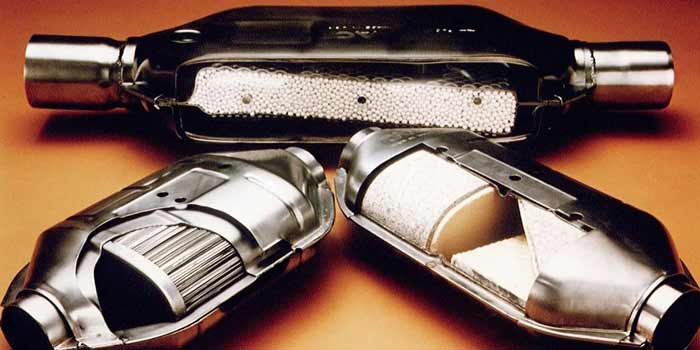
Automotive
As the name suggests, catalytic converter recycling is the process of recycling used catalytic converters. Catalytic converters are used in vehicles to convert harmful exhaust emissions into less harmful gases. There are a number of catalytic converter recycling Australia that can recycle your used catalytic converters. However, it is important to choose a company that is licensed and accredited by the Australian government. This article provides a detailed guide to catalytic converter recycling in Australia. It includes information on how to choose a reputable recycling company, what to expect from the recycling process, and how to get the best value for your catalytic converters.
A catalytic converter is an important emissions control device in a vehicle. It helps to reduce harmful pollutants in exhaust gases before they are released into the atmosphere. Catalytic converters are required in all new vehicles sold in Australia. How does a catalytic converter work? A catalytic converter contains a catalyst, which is a substance that helps to convert pollutants into less harmful substances. The catalyst is usually made of platinum or palladium. When exhaust gases flow through the converter, the catalyst helps to break down the pollutants into less harmful substances, such as carbon dioxide and water vapor. Catalytic converters are an important part of a vehicle’s emissions control system. They help to reduce harmful pollutants in exhaust gases before they are released into the atmosphere.
The process of catalytic converter recycling begins with the removal of the catalytic converter from the vehicle. Once the catalytic converter is removed, the next step is to remove the honeycomb from the converter. The honeycomb is made of platinum, palladium, and rhodium, and it is the catalyst that helps to reduce emissions. After the honeycomb is removed, the next step is to clean the converter. This is typically done with a solution of water and an organic solvent. Once the converter is clean, it is then cut open so that the precious metals can be extracted. The process of catalytic converter recycling is important because it helps to recover the valuable precious metals used in the converter. It also helps to reduce environmental pollution by reducing the amount of catalytic converters that end up in landfills.
There are a number of ways to catalytic converter recycling Australia. You can take it to a recycling center, or you can send it away to be recycled by a specialist company. When recycling your catalytic converter, it is important to make sure that you are using a reputable company. There are a number of companies that claim to recycle catalytic converters, but in reality, they simply send the converters to a landfill. Make sure you do your research to find a company that genuinely recycles catalytic converters. If you are unsure where to start, you can contact your local council or the Department of Environment and Conservation in your state or territory. They will be able to provide you with information on where you can recycle your catalytic converter.
Catalytic converters are an important part of a car’s exhaust system. They convert harmful pollutants in exhaust gases into less harmful ones. recycling them can help reduce pollution and save resources. As the world becomes more industrialised, the number of cars on the roads is increasing. This results in more harmful pollutants being released into the environment. Recycling converters can help reduce the amount of these pollutants. In addition, recycling converters can save resources as they contain metals that can be reused. For example, platinum is a valuable metal that is often used in catalytic converters. Recycling converters can help reduce the need to mine new platinum. So, in conclusion, recycling converters can help reduce pollution, save resources, and reuse valuable metals.
When it comes to recycling catalytic converters, there are many benefits that make this process worthwhile. First and foremost, recycling catalytic converters helps to preserve natural resources. By recycling the metal components in these converters, they can reduce the demand for mining and other extractive processes. This not only helps to conserve energy and water, but also reduces the overall impact on the environment.
In addition to conserving resources, catalytic converter recycling Australia can also help to create jobs. The process of recycling these converters requires skilled labor, and this can help to create employment opportunities in communities where resources are scarce. Finally, recycling catalytic converters helps to reduce waste and pollution. When these converters are properly recycled, the harmful chemicals and pollutants they contain can be safely disposed of, rather than being released into the environment.
Catalytic converters are an important part of a car’s emission control system, and they can last the lifetime of a vehicle. But when they’re retired, they still contain precious metals that can be recycled. The recycling process begins by removing the catalytic converter from the car. This is done by a qualified technician who removes the converter and sends it to a recycling facility. At the facility, the converter is dismantled and the metals are extracted. These metals are then sold to companies that use them to create new catalytic converters. The recycling of catalytic converters helps to conserve resources and protect the environment. By recycling these converters, they can reduce the need to mine for new metals, and they can also prevent harmful toxins from entering the environment.
In Australia, catalytic converter recycling is regulated by the Australian federal government. The recycling process begins by removing the catalytic converter from the vehicle. The converter is then cleaned and the metals are separated. The metals are then sold to refiners and smelters. The process of catalytic converter recycling Australia helps to reduce environmental pollution and conserve energy.